
I’ve owned many inkjet printers over the years. Chances are, you’ve had one or two yourself. While they are great—excellent print quality, unbeatable for printing photos, affordable to buy and compact enough to easily fit on a desk—there is one thing that virtually all inkjet owners soon come to hate: cartridges. These refills have low print yields, they can be messy to swap out, and they always seem to run out at the wrong time. Adding insult to injury, they are also expensive. The savings you see from buying an inkjet printer can quickly evaporate when you start paying for cartridges. Sound familiar? Then you need to get the lowdown on Supertank printers.
Supertank printers are a relatively recent development in the printer world and they are a game-changer. They are inkjet printers, so they still have everything you love. The ability to print laser-sharp text and incredibly detailed, life-like colour images. Support for a wide range of media types, including glossy photo paper, labels and iron-on transfers. But instead of being hobbled by print cartridges, supertank printers are equipped with massive ink tanks. You can literally go for two years out of the box, without having to buy ink. And no fussing with cartridges.
Here are a few great examples available at Best Buy:
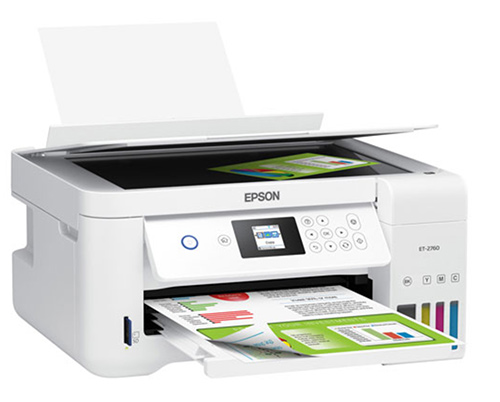

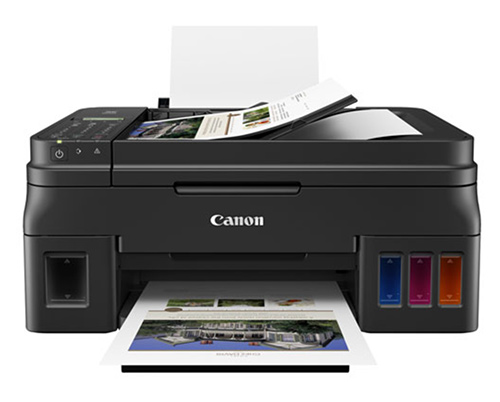
Big savings on ink
Any discussion on supertank printers starts with savings on ink. This can be huge, especially when you start looking at your expenditures over the course of several years. If you have school-age kids, or a small business? The amount of money you end up spending on replacement ink cartridges can be astronomical. And the purchases often start almost immediately, because many inkjet printers now ship with “starter” cartridges that only last a few dozen pages before you have to buy replacements.
My current inkjet printer takes refill cartridges that yield up to 200 pages of text printing, or up to 175 pages with colour. If I spend the extra for high yield versions of the cartridges, those page counts can double. But buy two of the high yield cartridge packs and that means spending more than the printer cost in the first place … Print high quality text or photo-quality images in any volume, and the actual page yields can shrink dramatically.
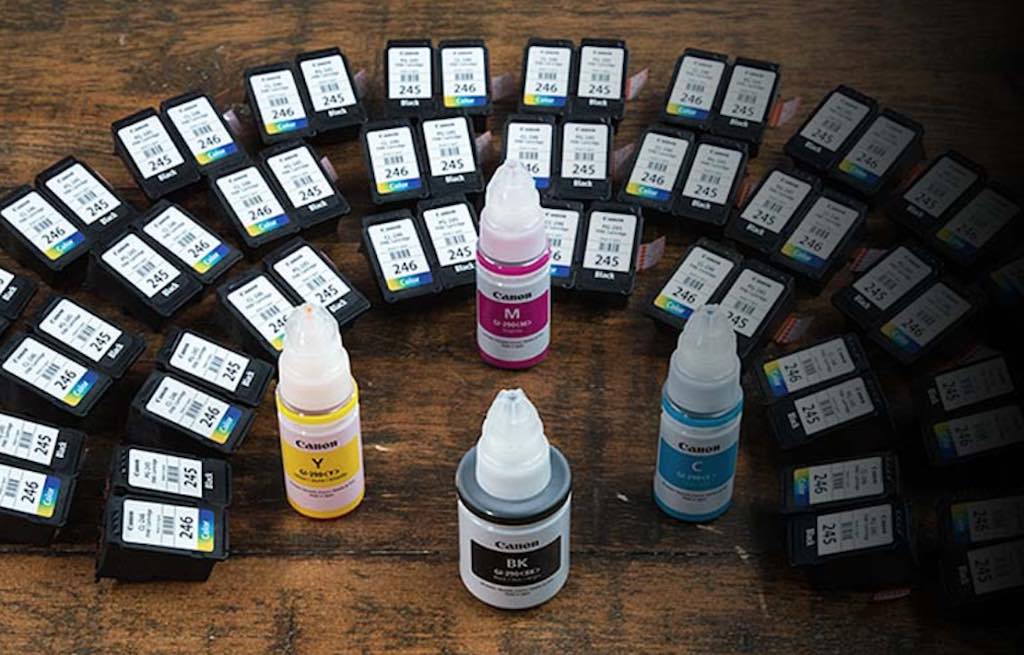
Many people develop an automatic reflex to print at draft quality, reduce the size of printed images or set rules around when it’s actually acceptable to print something. All because the cost per page is so high. And that’s a shame, because this means you own a printer, but aren’t getting the benefits out of owning a printer.
Supertank printers offer a dramatic savings. I recently reviewed a Canon supertank printer, equipped with ink tanks that hold up to 30x the amount of ink in a standard ink cartridge. It’s rated at 6,000 pages of black and 7,000 pages of colour printing from the included ink tanks. For many owners, that would be two years (or more) of printing right out of the box. Think about that, then compare it to buying 30 replacement ink cartridges. Some supertank printers have printing yields that are significantly higher than the one I tested.
Yes, supertank printers cost more than a standard inkjet printer upfront, but for most users, it won’t take long to recoup that initial expenditure compared to paying for ink cartridges.
Cartridge-free printing
If there’s anything I hate more than paying for ink cartridges, it’s replacing them.
 Position the printer so you can access the compartment that holds the cartridges and make sure you have enough light to actually see what’s going on. Pull out the empty cartridge, being careful not to get ink smeared on fingers, clothing or furniture. Unbox the replacement cartridge, find scissors to open the sealed pouch, remove the plastic protector from the cartridge, try to figure out which way it goes in (there’s a reason many printers now show animated replacement instructions on their LCD display), and snap it in. All while also trying to avoid getting ink everywhere. Then run a test cycle so the printer can clean nozzles, check alignment and verify the install went smoothly.
Position the printer so you can access the compartment that holds the cartridges and make sure you have enough light to actually see what’s going on. Pull out the empty cartridge, being careful not to get ink smeared on fingers, clothing or furniture. Unbox the replacement cartridge, find scissors to open the sealed pouch, remove the plastic protector from the cartridge, try to figure out which way it goes in (there’s a reason many printers now show animated replacement instructions on their LCD display), and snap it in. All while also trying to avoid getting ink everywhere. Then run a test cycle so the printer can clean nozzles, check alignment and verify the install went smoothly.
Compare that to refilling a supertank printer. When I did it, I popped the cap off the nozzle of the included bottle, stuck that in the top of the tank with the corresponding colour and squeezed gently until the contents were all in the tank. Easy access, no spillage, and no trying to figure out which way is up. You do this once when you first set up the printer, and probably won’t have to do it again for several years. With a standard inkjet printer, you could be going through that cartridge replacement routine dozens of times to print the same number of pages.
Visible confirmation of ink levels
One thing people notice immediately when they look at a supertank printer is the namesake ink tanks. You can actually see the big tanks filled with liquid ink. This makes for easy access should you ever have to refill the ink, but it also has the benefit of being able to visually confirm ink levels. You can see at a glance if one of the tanks is getting low.
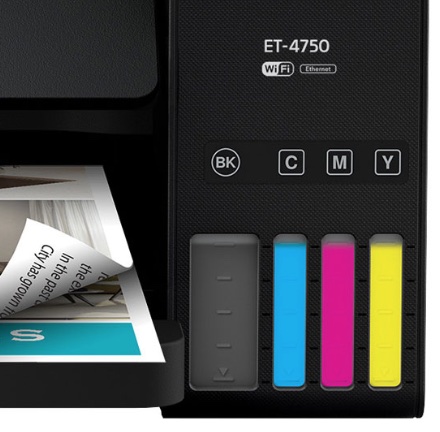 Contrast that with an inkjet printer. You can’t see the cartridges without removing them and even if you did, most are black plastic so you can’t actually see the contents. If not for a colour label on the cartridge, chances are you won’t even know if you’re holding black or yellow. If you want to know how much ink is remaining, you’ll need to either fire up the printer to check, or run a supply check via your computer.
Contrast that with an inkjet printer. You can’t see the cartridges without removing them and even if you did, most are black plastic so you can’t actually see the contents. If not for a colour label on the cartridge, chances are you won’t even know if you’re holding black or yellow. If you want to know how much ink is remaining, you’ll need to either fire up the printer to check, or run a supply check via your computer.
“Ink anxiety” from low page yield leads combined with a constant uncertainty to just how close they are to running out leads to inkjet printer owners stockpiling extra cartridges. This is expensive and inconvenient, but better than the alternative of running out mid-way through printing an assignment at midnight, when stores are closed …
Ink anxiety is a thing of the past with a supertanker printer.
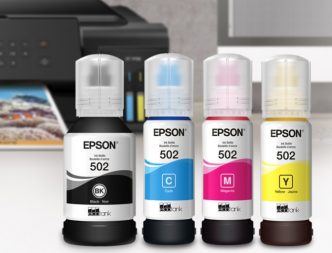 Replace only what you need
Replace only what you need
Another sticking point for many inkjet printers is the combined colour cartridge. In this common design, there are two cartridges: one black, and one containing all three colours: cyan, magenta and yellow. The problem is the three colours aren’t always used up at the same rate, but as soon as one is done, the entire cartridge has to be replaced. This often results in inkjet printers that need more frequent cartridge replacements, making printing even more expensive.
With a supertank printer, black and each of the three colours has its own tank. In the event that you run out of one colour before the others, you only have to refill the empty tank.
Your next inkjet printer should be a supertank printer

If you’re tired of the printing expense and ink anxiety of inkjet printers, there is now a solution. Choose a supertank printer and you get all the advantages of inkjet technology—including the high quality colour printing—with an operating cost that’s much, much lower. And the prospect of going two years before even having to think about refills.


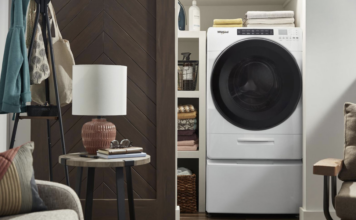

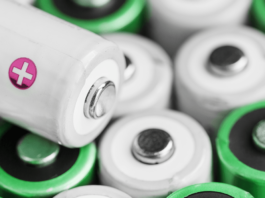












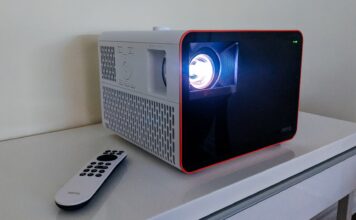






















I could use this printer for my home office. Also, I would print out old family photos (I have many!) of my grandparents for my children and grandchildren so that that the younger generation can keep their memory alive.
Finally I can save on ink.
Thank you Brad, just like Elliot above I worry about the ink sitting in the printer drying out if not constantly in use.
I’d also equate this to purchasing an electric car, you pay more up front and save money over the long term. I wonder where the break even point is on these supertank printers, if you include ink drying out etc. So that way all variables are accounted for and we are looking at apples to apples from a cost benefit perspective.
Good points on the concerns about ink drying up. I think that if you print very infrequently, you’re probably not a great candidate for a supertanker printer — these are aimed more at people who are swapping out cartridges on a fairly regular basis. If you have school-aged kids at home, for example. That being said, the inkjet printer I’ve been using for the past three years (not a supertank model but same basic printing mechanism), sees use maybe once or twice a month. I had an issue once with a full cartridge that was refusing to print, but the printer has a nozzle cleaning routine that dealt with it — costs a little extra ink, but it means not having to get rid of the cartridge.
These are great for those that are printing on a regular basis, at least once or twice per week, so great for the in-home office, or regular office use. I am concerned about the ink drying up when not used for long periods of time, such as normal home use, at which point I’d opt for an inkjet printer.
Comments are closed.